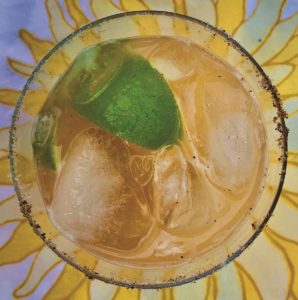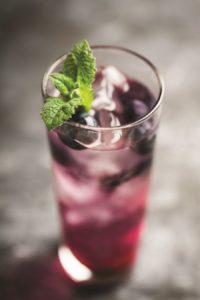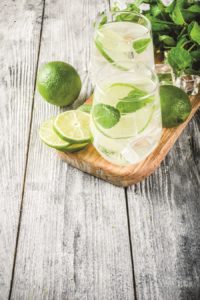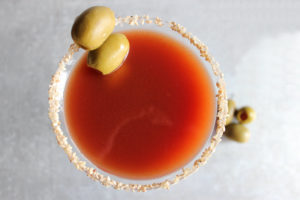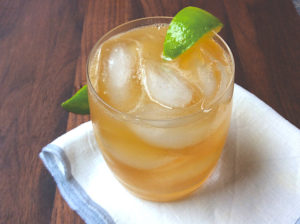The rain is coming down hard from a low, leaden sky, and the wind is whistling down Paradise Hollow so fiercely that we fear for the roof.
On such a stormy night, it’s almost strange to think back on that bright autumn day two weeks ago when I visited South Hollow Spirits to see what could be learned about their recently released rye whiskey. Then the sky was a clear cornflower blue, and the warmth of the sun balanced the breeze blowing across Truro Vineyards, where South Hollow, the distillery, is housed.
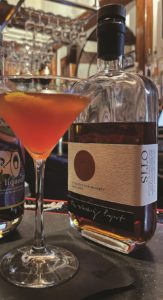
I’ll admit, I do love a good cocktail. So, I already knew about South Hollow’s earlier projects: there are rums — white, amber, spiced, and cask finished — as well as three kinds of gin. They are steeped with juniper berries from local red cedars or spiked with cardamom and anise brought here by the Atlantic Spice Company, the vineyard’s next-door neighbor. All these concoctions remind me how lucky we are to live here. How many small towns are able to stock their liquor cabinets with locally produced booze?
I arrive a little early for my scheduled meeting with Dave Roberts Jr., who joined his family’s transformation of the old vineyards, begun in 2007, with an eye to making spirits. Getting there ahead of time gives me a chance to hang out in the distilling room, which smells like fermentation — a little funky, a bit yeasty, and a lot intriguing. I wonder if one can get tipsy just by breathing deeply next to the huge shining copper still.
When Dave ambles up, he tells me that, while South Hollow distills the rums and gins in their still — also known as a “pot” — they don’t actually distill their own whiskey. In fact, I learn, few small distilleries do.
Instead, South Hollow purchases distillate from the unromantically named Midwest Grain Products, a big Indiana-based distillery that sells a variety of superior-quality spirits to many well-known brands — think High West Double Rye or Angel’s Envy or Bulleit. Most small-scale producers don’t have the resources to get top-quality grains nor the space to sit on the whiskey while it ages.
Because whiskey is experiencing a moment in the limelight, Dave says, it can even be difficult to get good distillate. So, when he got his hands on this batch of rye, aged in charred oak barrels, Roberts wanted to make it something special.
Here in Truro, he explains, is where the real craftwork begins. The distinctive aromas and flavors of a rye like this are arrived at through blending and aging. The result is not his handiwork alone, Roberts adds. He worked on it with assistant distiller Bill Melody, and the two consulted with winemaker Milan Vujnic as well. They opted to age this batch in red port barrels from which the rye pulls its characteristic fruit notes. The final aging continues “until it’s ready,” says Roberts.
They’re calling this rye Otis, after Roberts’s 14-year-old bulldog. “Ruby and Lucy are next,” says Dave’s sister, Kristen Roberts. The whiskeys are dedicated, sort of like the song says, “to all the dogs we’ve loved before,” she adds.
Soon enough, Otis will be followed by another five-year project, a bourbon. We can’t be sure when to head over to the vineyard to sample it, though. That’s because, as with the rye, Roberts says, it will be ready “when it’s ready.” Which puts me in mind of those 1970s Orson Welles commercials for Paul Masson — “We will sell no wine before its time.”
Back at the cottage, the wind is whipping furiously as we uncork the handsome bottle. Sniffing and sipping it neat, we agree that it has a robust sweetness, more than other ryes we’ve tasted. Christopher identifies toasty notes, with hints of caramel.
We decide on a simple cocktail that will allow the rye to shine: a perfect Manhattan. “Perfect” refers in this case not to the excellence of the cocktail (though the batch Christopher mixed up was indeed delicious) but to the use of both dry and sweet vermouths.
Sipping the drinks from our big girl cocktail glasses, we find the rye just right in this preparation. “It certainly announces itself,” our friend Greg declares. “It doesn’t stand back at all. It’s got that assertive booziness that I want.”
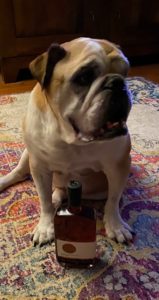
And that is how, lashing rain notwithstanding, a dark and stormy night can take a turn for the perfect.
Perfect Manhattan
Makes one cocktail
2 oz. rye whiskey
½ oz. sweet vermouth (we like Carpano Antica)
½ oz dry vermouth (we like Dolin)
2 dashes bitters (orange or Angostura or a little of both)
2-inch length of orange zest
If you’re serving the Manhattan up — and you should — chill your cocktail glass in the freezer or fill it with ice cubes while you mix your drink.
Pour the rye and vermouths into a large glass full of ice cubes. Shake on the bitters. Stir vigorously with a long spoon and allow the mixture to sit for a few minutes to allow a little of the ice to melt and mellow the drink.
Strain the cocktail into your cold glass and twist the orange peel over it, releasing the aromatic oils from the zest. Rub the peel around the edge of the glass and drop it into the Manhattan.
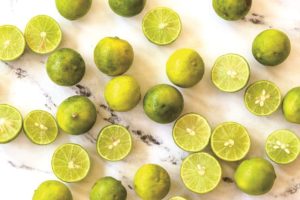 The one absolute key to a good, authentic margarita is fresh lime juice — but not just any lime juice. It must be juice from the smaller key limes (or Mexican limes, as they are known in the Southwest). Buy the limes by the bagful, squeeze them, and freeze the juice in ice cube trays. You also want to use a good tequila, but it doesn’t have to be connoisseur quality. I prefer Sauza Hornitos, which is a slightly aged or reposado tequila, and, as you might guess, what my dad used.
The one absolute key to a good, authentic margarita is fresh lime juice — but not just any lime juice. It must be juice from the smaller key limes (or Mexican limes, as they are known in the Southwest). Buy the limes by the bagful, squeeze them, and freeze the juice in ice cube trays. You also want to use a good tequila, but it doesn’t have to be connoisseur quality. I prefer Sauza Hornitos, which is a slightly aged or reposado tequila, and, as you might guess, what my dad used.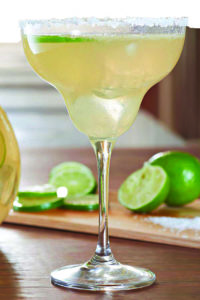 My recipe resembles the “San Antonio Margarita,” which made its way from restaurateur Mario Cantu to Sam Sifton, who put it in the New York Times a few years ago. I like that it makes a quart pitcher to serve six to eight. Where the Times version includes the addition of six ounces of water to help smooth out the margarita, I consider that optional — after all, you’re serving the drink over ice, and as you sip it, the drink will mellow.
My recipe resembles the “San Antonio Margarita,” which made its way from restaurateur Mario Cantu to Sam Sifton, who put it in the New York Times a few years ago. I like that it makes a quart pitcher to serve six to eight. Where the Times version includes the addition of six ounces of water to help smooth out the margarita, I consider that optional — after all, you’re serving the drink over ice, and as you sip it, the drink will mellow.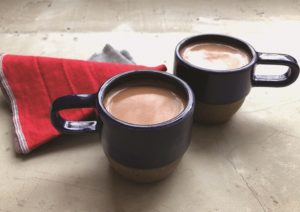
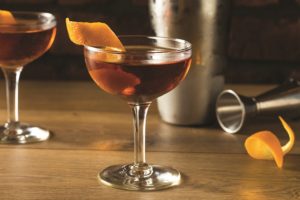 The Peacock Alley Martinez
The Peacock Alley Martinez